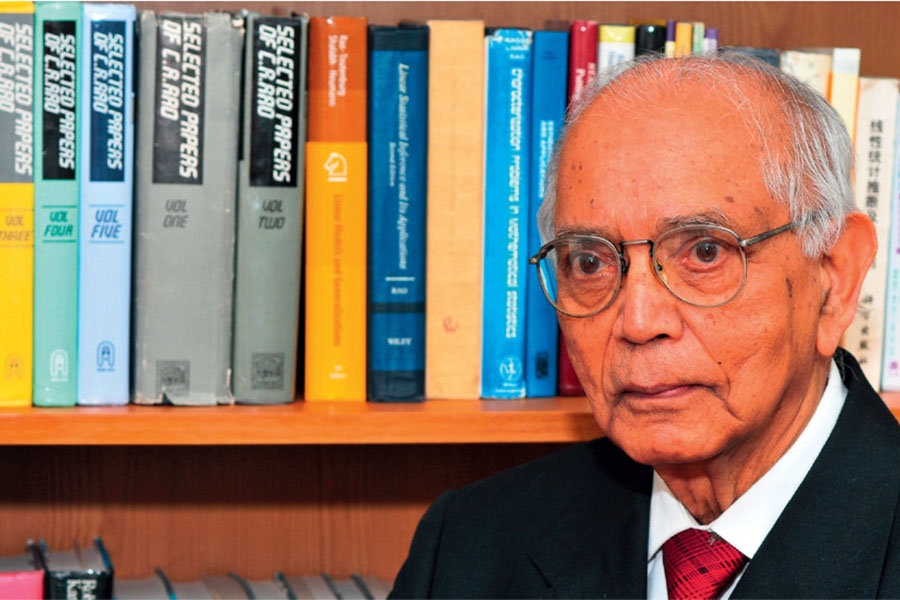I was at a conference in Sheffield sometime in the 1980s (from memory), which had a large and distinguished mathematical audience, with Rao as one of the principal speakers. I knew what a great statistician he was; I did not know what a showman he could be.
In the front row were the two academics who had invited him. He thanked them by name, but apologised that he needed to press them into service to do a chore – counting hands. The lecture room was steeply banked, with a staircase down the middle; Rao assigned one of them to each side. He asked for all those present with a brother to raise their hands, and had them counted carefully. He then did the same for sisters. It was immediately obvious that there were far fewer; everyone present was astonished, except Rao.
This hinges on two things. The first is statistical – selection bias: most of the audience were men, so their parents were not representative of parents generally, but of parents who had produced a son. The second is biological: Rao mentioned that there are male-producing couples and female-producing couples, as his audience would have observed. I had to ask a doctor friend why this was. Vaginal pH (which determines which gender is favoured) varies with the state of the woman’s menstrual cycle, for all women in the same way, but a woman’s libido varies with the state of her cycle, in different ways for different women. There is real mathematics here, real statistics, real biology — and a real insight into Rao’s fascinating character.
Nick Bingham, Mathematics Department, Imperial College, London
______________________________________________________________________________________________________________
This is the full, corrected version of the letter ‘Memories of C. R. Rao’ by Nick Bingham, which was subject to typesetting errors when published in the December 2023 – volume 20 issue 6 – edition of Significance.




